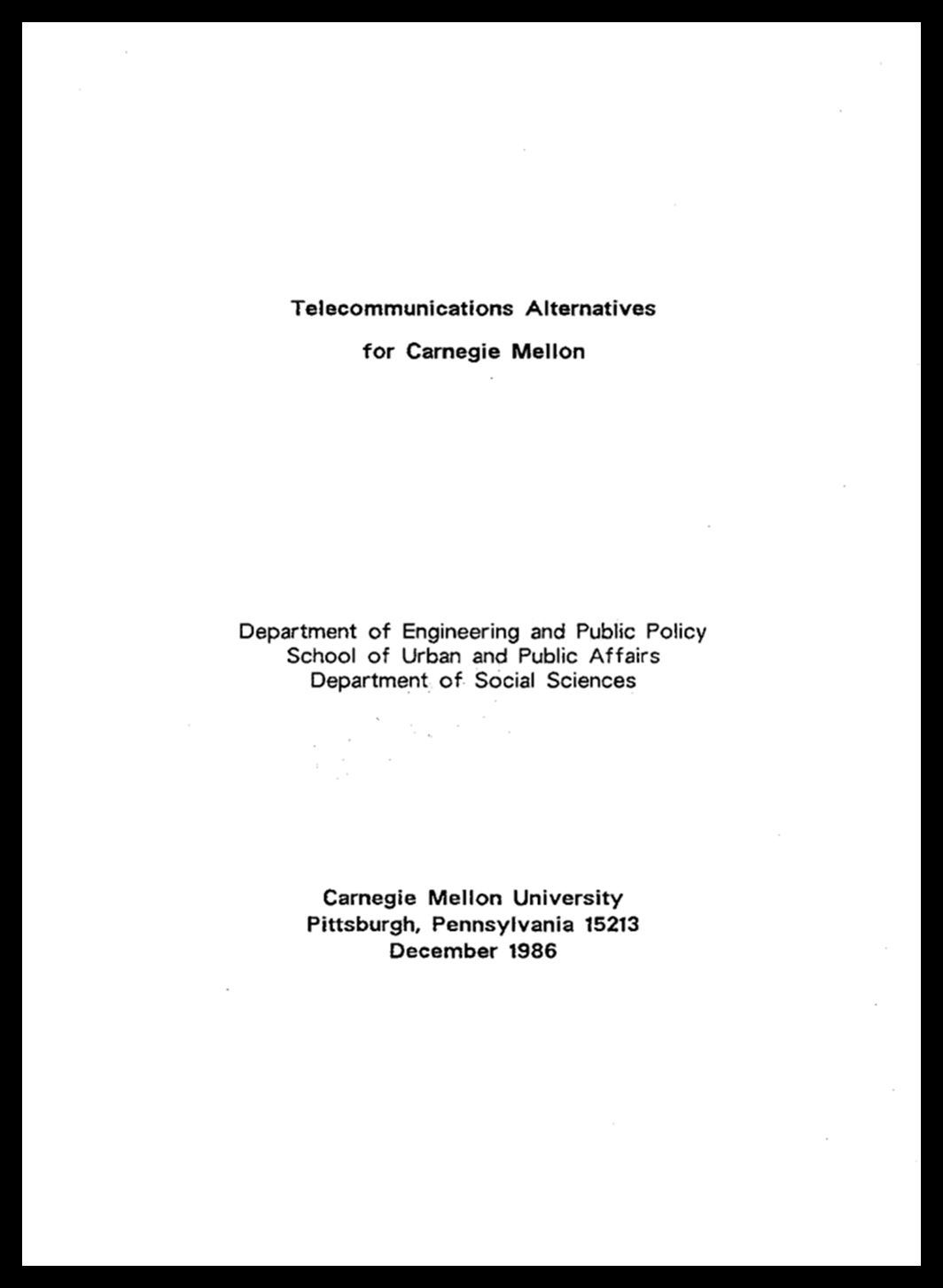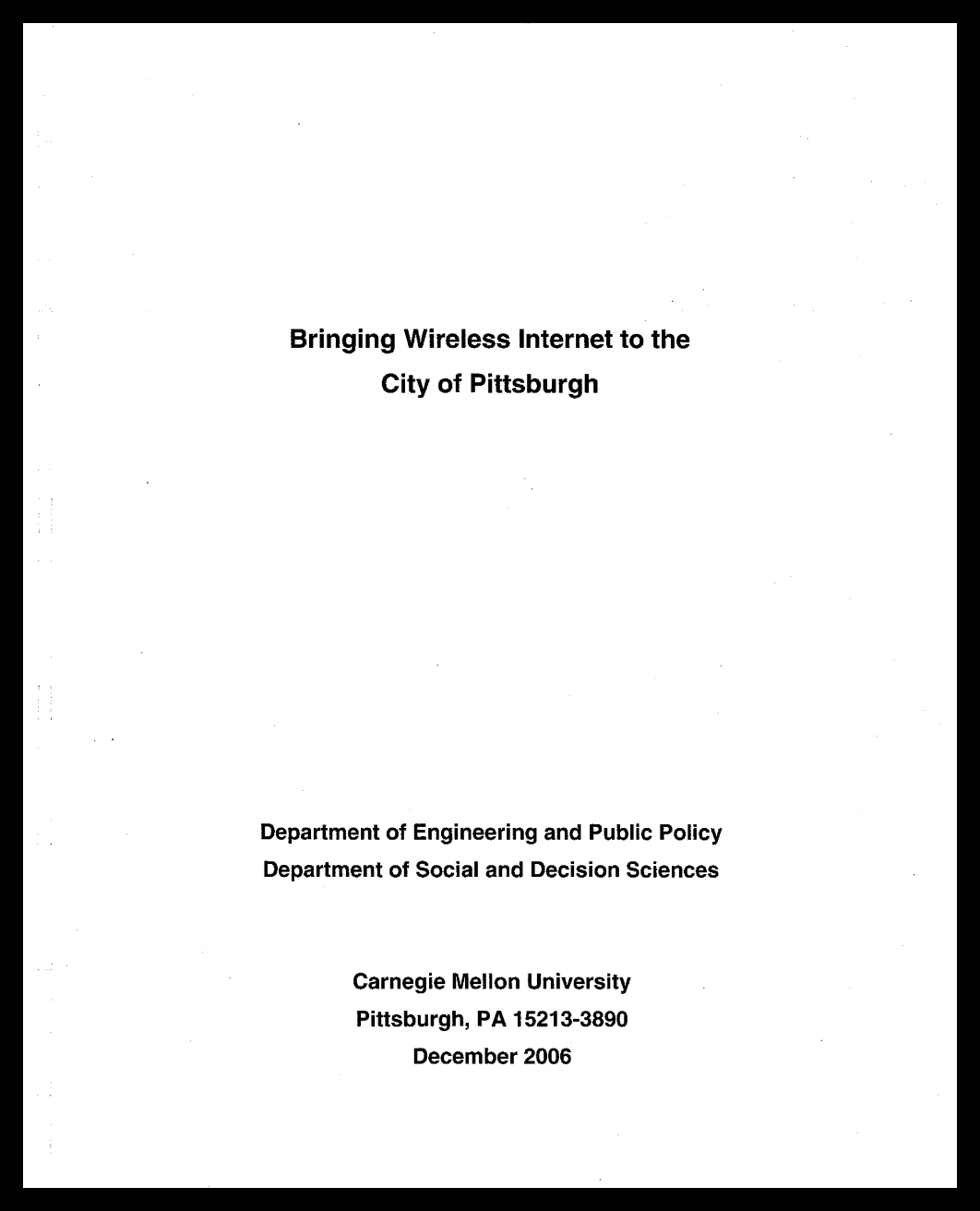Infrastructure, Part 2
Our next installment of celebrating EPP Projects at 50 continues on the infrastructure theme, but now with a walk on the wired side. From electricity to communications technology, the projects have addressed the needs of stakeholders across a broad spectrum (sorry for the pun).
Early projects (and late ones) have examined television access, telecommunications, wireless internet access, and more. Projects such as The Medium of Wireless: An Analysis of Spectrum Measurement, Demand, and Policy (Spring 2002) and Pittsburgh CivicNet: Broadband for a better Pittsburgh (Spring 2004) took a closer look at the city's current wireless internet infrastructure. Other projects, such as Untangling the Wires: Assessing the Feasibility of Underground Utilities in Pittsburgh (Fall 2002) and Sustaining Pittsburgh’s Vital Services When the Power Goes Out (Spring 2004) took on the task of analyzing Pittsburgh's wired infrastructure, citing current issues and providing meaningful alternatives to make the current infrastructure more resilient.

The Fall 1986 project, Telecommunications Alternatives for Carnegie Mellon, explored the possibility of alternative methods for communication at CMU while also assessing the quality and usability of CMU’s current communication methods at the time. A key takeaway from this project was the finding that CMU could broaden the use of video technology for academic and archival purposes — perhaps even creating a centralized video network in the future — and integrate newer teleconferencing technology to improve communication amongst people who are not physically present with each other.

The Fall 2006 project, Bringing Municipal Wireless Internet to the City of Pittsburgh, analyzed the feasibility to incorporate a central wireless internet system in Pittsburgh citywide. At the time, Philadelphia was on the way to developing a city-wide internet network, and many people in Pittsburgh thought we should too, so we too could be at the cutting edge. Ultimately, upon reviewing the findings of the project, the project members recommended to the Pittsburgh City Council that they do not implement a city-wide system. The project members argued that the system would not be financially sustainable, even under optimistic assumptions. As an alternative, the Pittsburgh City Council decided to scale down their idea and instead implement a wireless system in the downtown business district and in the Lower Hill District. Later community wi-fi projects have expanded service into Point State Park and the North Shore as well. As a side note, Philadelphia did end up going through with a citywide public wi-fi network. It was a financial disaster.